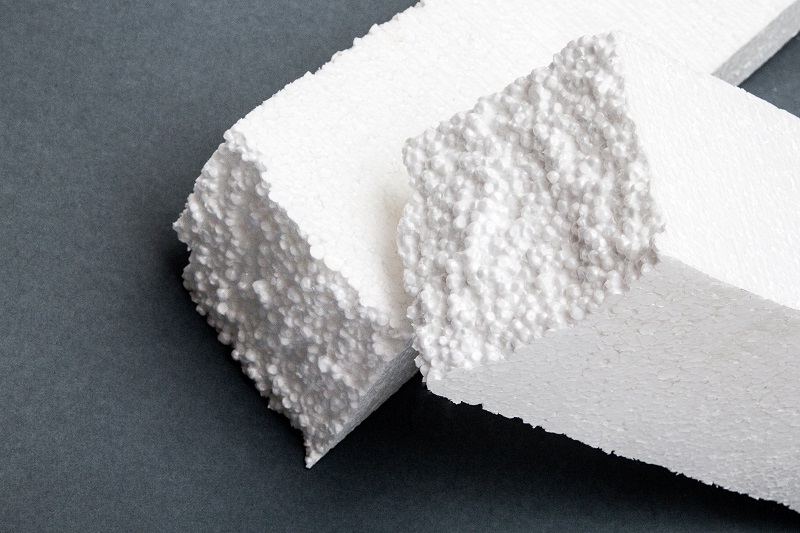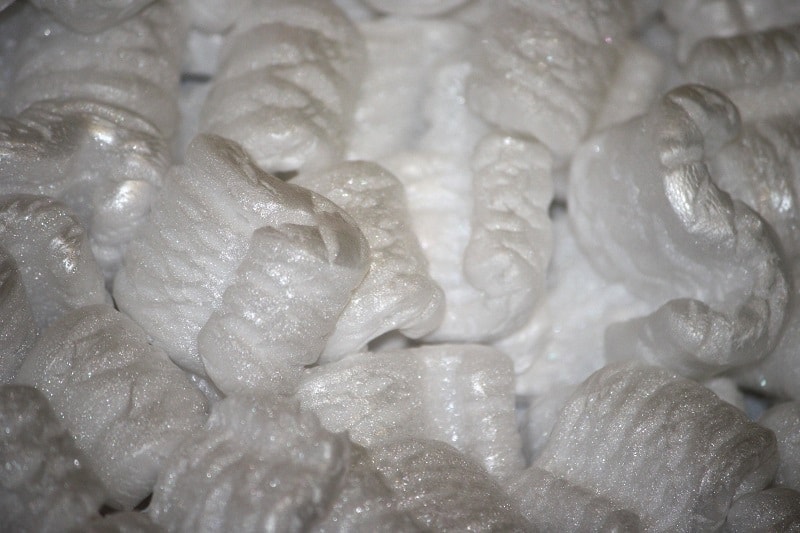How to Dispose of Styrofoam Safely: Help Protect the Environment!
-
- Last updated:


Styrofoam or polystyrene is used in the packaging of goods and insulation. It is lightweight and has excellent shock absorption qualities, but around 15 million tons are produced yearly, and most of it ends up in garbage cans and landfills. Unfortunately, most recycling collection services and centers will not accept the material, so it is thrown away.
Only a little more than 10% of the Styrofoam produced is recycled yearly, and one-third of an average landfill is made up of packaging material. Some companies are attempting to minimize the packaging they use, while governments are moving to have recycling collections accept and properly recycle the material. In the meantime, there are several ways that you can safely dispose of the material and ensure that it does not become a landfill statistic.

Can You Throw Styrofoam in the Recycling Bin?

Theoretically, Styrofoam can be recycled. It can be taken away, compacted, and reused as packaging material. However, the material is made up of #6 plastic and air. This combination makes it light and easy to ship and allows for its use as a packaging material without adding to the cost of transport.
Its properties also make it prohibitive for waste collection and recycling collection companies to gather and recycle the material. It cannot be automatically sorted, which makes it cost-prohibitive to recycle it. It is less expensive to make new Styrofoam, rather than recycle and reuse old containers. But that doesn’t help when disposing of the packaging material.
Break It Down
Styrofoam is very light and can absorb shock and prevent damage to products that are in transit. The styrofoam pieces tend to be large, and they will need to be broken down before you can hope to fit them in your bin. In some cases, especially when used as packaging for large products, it may even be too large to fit in the trunk of your car.
Break down the Styrofoam carefully, ensuring that as little material blows away as possible. The tiny pellets can easily break off. They can find their way into the drains, rivers, and, eventually, oceans and the sea. Single-use plastics and Styrofoam are major pollutants in our waters and coastlines.
Throw It Away

If you only have a tiny amount of Styrofoam, you can throw it in the garbage can. It isn’t practical to get in the car and drive to a recycling center. Arguably, the environmental impact of driving to the recycling center and back could cause as much harm to the environment as throwing plastic in the bin.
When the material makes it to a landfill, it will take up a lot of room and take hundreds of years to break down. Consider gathering a large bag of Styrofoam cups and other items before taking them to your local recycling center.
Find a Recycling Center
Use the Earth 911 recycling center locator to find a recycling center near you. Some centers will accept various forms of expanded polystyrene. Many delivery centers and companies will take Styrofoam chips used as packaging because they can reuse the items without having to do anything to the material. However, to-go cups and takeaway containers are a different story because of the contaminants that they contain.
Transport It
Finally, once you know where to take your recycling, you can transport it in large trash bags. The material is light and will easily blow away in the wind, and it’s best to secure the bags with rope or bungee cords if you use a pickup truck.

FAQ
Is It Better to Burn Styrofoam or Throw It Away?
Some people consider burning Styrofoam as an alternative to recycling or properly disposing of the packaging material. However, burning expanded polystyrene releases carbon monoxide and black carbon into the air. They are highly toxic and very dangerous, which is one reason why this disposal method is not routinely used. It is also why you should not burn packing chips and styrofoam.
How Long Does It Take for Styrofoam to Decompose?
Nobody knows for certain how long it takes for Styrofoam to decompose. It was invented and first used in 1941. Experts believe it will take a minimum of 500 years to decompose, but it cannot be proven because it has only existed for 80 years. So far, it has not been disproven either. Other experts claim that it may never break down or decompose.
Is Styrofoam a Hazardous Waste?
Even though the polystyrene manufacturing process has been listed as the fifth-largest source of hazardous waste as of 1986, Styrofoam is not considered hazardous waste.
How Do You Dispose of Bubble Wrap?
Bubble wrap is another common packaging material, and while many of us enjoy popping the little pockets of air, the material is another item that cannot be recycled in our home recycling bins in most cases. Fortunately, it takes up a lot less room, and you can collect a large volume of bubble wrap and other soft plastics before taking them to a recycling center or having them collected by a recycling company in your area.

Dispose of Styrofoam Safely
Styrofoam is the trading name of a brand of expanded polystyrene. This lightweight material finds its way to landfills or into the seas and oceans if we’re unlucky. Its weight and cost make it difficult to recycle, which means that it cannot be placed in a home recycling bin. Packaging materials like Styrofoam chips can be taken to shipping and manufacturing companies for reuse, and some other forms of Styrofoam can be recycled at recycling plants, but the products that have been contaminated with food cannot be recycled and will usually end up in the trash.
You might also be interested in:
- 10 DIY Morris Chair Plans You Can Make Today
- 10 DIY Morris Chair Plans You Can Make Today (With Pictures)
Featured Image Credit By: Ekaterina43, shutterstock
Contents

